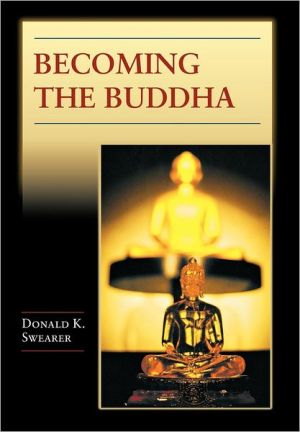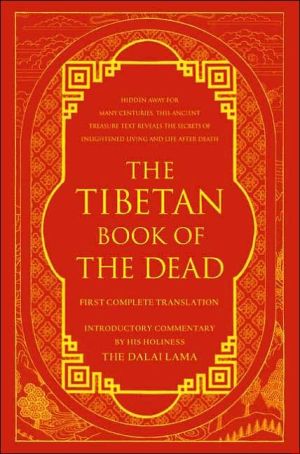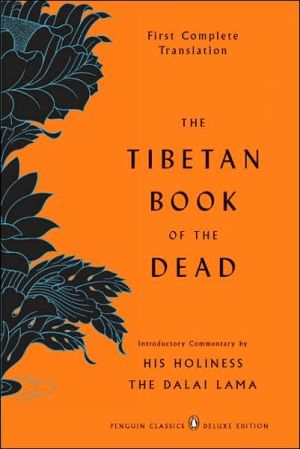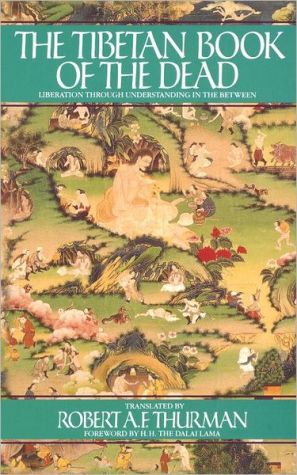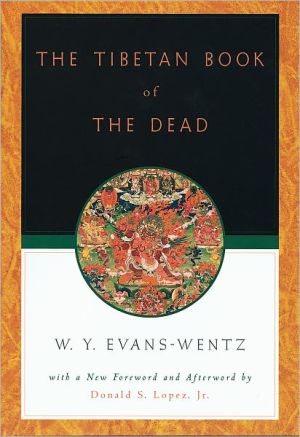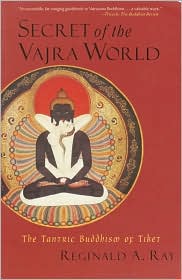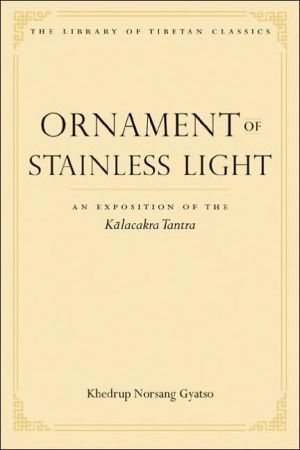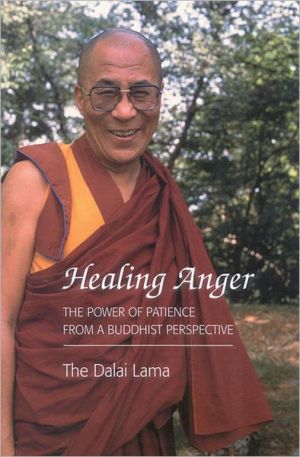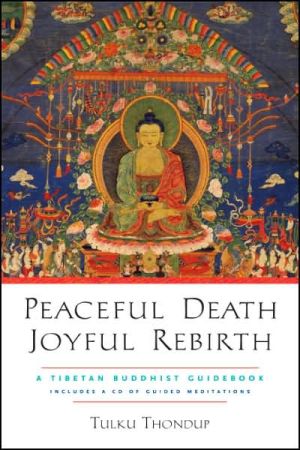Becoming the Buddha: The Ritual of Image Consecration in Thailand
Becoming the Buddha is the first book-length study of a key ritual of Buddhist practice in Asia: the consecration of a Buddha image or "new Buddha," a ceremony by which the Buddha becomes present or alive. Through a richly detailed, accessible exploration of this ritual in northern Thailand, an exploration that stands apart from standard text-based or anthropological approaches, Donald Swearer makes a major contribution to our understanding of the Buddha image, its role in Buddhist devotional...
Search in google:
"In Becoming the Buddha Donald Swearer has provided a multifaceted historical, ethnographic, and comparative study of an image consecration ritual that lies close to the very heart of popular Buddhist piety. Drawing on more than four decades of textual research and field experience in northern Thailand, Swearer provides compelling descriptions and probing analyses that will command the attention of scholars in Buddhist studies and ritual studies for many years to come."--Frank Reynolds, co-translator of Three Worlds of King Ruang: A Thai Buddhist Cosmology"Reading Becoming the Buddha was an exciting, note-taking, eye-opening experience that stimulated my thinking about the field and about my own work. This book is the product of a mature scholar whose many years in the field and whose prolific writings have made him one of the world's top authorities on Thai religion and culture, and yet it retains a freshness in the approach it takes, the topic it tackles, and the conclusions it upholds. There is nothing like it in print that I know of. I have every confidence that it will become, in a few years' time, a much referred to, often quoted, classic."--John S. Strong, Bates College, author of The Legend and Cult of Upagupta"This is the first major book-length study of image consecration for Indian or Southeast Asian Buddhism that is accessible to a general readership. The scholarship behind it is enormous. Donald Swearer has collected a great range of texts and translated them adeptly while also incorporating ethnographic materials that are not only excellent but at times quite delightful."--Richard Davis, Bard College, author of Lives of Indian Images John E. Cort - Religious Studies Review A thorough and magisterial study. . . . This book will be essential reading for anyone interested in Buddhism, Buddhist 'theology,' images, and the material culture of religions.
Becoming the Buddha\ The Ritual of Image Consecration in Thailand \ \ By Donald K. Swearer \ Princeton University Press\ Donald K. Swearer\ All right reserved.\ ISBN: 0691114358 \ \ \ Chapter One\ THE GREAT WORLD RELIGIONS focus on one or more central figures who may be divine, human, or some combination thereof. What would Buddhism be without the Buddha Gotama, Islam without Muhammad, Christianity without Jesus the Christ? It is unimaginable. Myth and ritual, creed and philosophy derive from or point toward these extraordinary and often supermundane figures. This study explores a specific dimension of this central feature of the world's great religions using as its referent the Theravada Buddhist tradition as it developed in the Chiang Mai valley of northern Thailand. Specifically, it examines the Buddha image consecration ceremony and its Buddhological significance within popular northern Thai religious thought and practice.\ In the Mahaparinibbana Sutta, the Buddha explains to his beloved disciple, Ananda, that after the Blessed One's death the dhamma and vinaya will be his disciples' teacher (D II.154). This passage is frequently cited out of context to support several doctrines considered to be quintessentially Theravadin, in particular, that the Buddha was an enlightened being but not to be revered as divine; that he was to be respected as a teacher of the dhamma but was not to be become an object of attachment. In this study the lessons derived from popular Buddhist thought and practice in northern Thailand appear to be diametrically opposed to such views. The Buddha that emerges through the medium of the image becomes a grantor of boons, and the Buddha's teaching about nonattachment falls victim to an obsessive preoccupation with sacred objects revered for their protective potency and economic value.\ Are we, then, witness to two oppositional forms of Buddhism-an "original" monastic worldview of high moral philosophy and spiritual practice versus a thoroughly compromised, if not debased, tradition of magical expectation? Such a dichotomy is the projection of the logical mind uncomfortable with the incongruities within religious thought and practice, and the creation of Buddhist apologists whose relatively narrow view of a nontheistic, rationalistic Buddhism appeals to the modern mind. But the lived tradition of Buddhism, like all classical religions, is not so tidy. It teems with paradox, myth, legend, and symbol not so easily rationalized into a logical system. The seeming oppositions and paradoxes found in the Buddha image consecration ceremony reflect a dialectic at the very core of Buddhism between the ideal of an ultimate personal transformation and the need to address the entire range of life experiences bracketed by birth and death. This dialectic is reflected in distinctions that permeate the tradition between the mundane (lokiya) and transmundane (lokuttara), and applies to the person of the Buddha himself: human and supernatural, teacher of the dhamma, miracle worker, grantor of boons. Indeed, the Mahaparinibbana Sutta incorporates these several views of the Buddha in a single text and exhorts the Buddha's followers not only to honor the dhamma but to venerate the Buddha's bodily remains (sariradhatu).\ This study of the Buddha image consecration ceremony in northern Thailand brings together a wide range of meanings of the person of the Buddha both explicit and implicit in this richly complex ritual. On one level the ceremony provides a fascinating arena for a study of the relationship between myth and ritual. The distinctive texts chanted and preached during the nightlong proceedings represent various episodes in the mythic, legendary life of the Buddha. The meaning of the Buddha story is enhanced as episodes of the sacred biography are correlated with successive phases of the image consecration ritual.\ On another level this study explores Theravada Buddhology within the context of popular practice by examining the content of particular texts chanted and preached during the ceremony. The integration of text and context provides a more nuanced picture of the Buddha at the center of a living Buddhist tradition. At the same time, the texts and the ritual that define the contemporary northern Thai Buddhist ceremony invite comparison with other Buddhist traditions past and present. Cross-cultural comparisons among Buddhist and Hindu/Brahmanical traditions further illuminate the Buddhological significance of the northern Thai ceremony while challenging certain textbook distinctions between Theravada/ Hinayana, Mahayana, and Vajrayana views of the nature of the Buddha.\ The texts chanted and/or preached in the ritual have connections to Pali canonical and extracanonical Buddha biographical material. For example, the Pathama Sambodhi (The Buddha's Supreme Enlightenment) has a much longer literary form in both its Pali and northern Thai versions. But within the context of the Buddha image consecration ceremony the text is adapted to its use and function rather than as a written text or a literary document per se. Just as the story of the Buddha "takes place" within a given physical, religious, and social context, so also the sacred biography "takes form" in an image of the founder.\ Through the image, the life of the Buddha assumes a present reality not simply as a reminder of a sacred story but as a physical representative of the story's protagonist. The inseparable connection between the image and the sacred biography within the context of the ritual suggests that the historical development of the Buddha image and the Buddha story may have been closely connected from the very beginning. No attempt will be made to prove such an assertion, but this study suggests this possibility. One of the major functions of the Buddha image consecration ceremony is to instruct the image in the life story of the person the image represents. If both Buddha biographies and Buddha images developed around the first century C.E., then it may be reasonable to see in their joint emergence not only the motive force for Buddhist devotional sentiment, but the raison d'être for a ritual with the performative power to create a living representation of the tathagata. The consecration ceremony, however altered over time and space, has fused the person and story of the Buddha with the image of the Blessed One in, as some would claim, a most miraculous way.\ The consecration ceremony contextualizes and contemporizes the life story of the Buddha. The Blessed One comes to life as do other characters in the story such as the mythic Mara and the female devotee, Sujata. By contemporizing a mythic time, the image consecration ritual connects the Buddha with other ritualized heroes past and present: with the pious Phra Malai and the noble Prince Vessantara, whose lives are often celebrated concurrently with the consecration of a Buddha image; a young man being ordained into the monkhood, whose begging bowl is filled with small Buddha images and amulets; or, the senior monk elevated in ecclesiastical rank, whose consecration ceremony and that of a Buddha image coincide.\ The Buddha also lives in the form of particular Buddha images that have their own sacred stories (tamnan). Some of these images, such as the Emerald Buddha in Bangkok, have a special relationship with kings. Others, like the Lion Buddha image of Chiang Mai processed through the city streets to bring rain during the annual New Year celebration, have a power derived from an association with nature as well as royalty. The Buddha also lives through his images and ceremonies that empower/consecrate him as the redeemer of macrocosmic time-those Buddhas of the past eons, Dipankara, Kassapa; of the present age, Gotama Buddha; and of the future, Metteyya-and of personal or microcosmic time, the birthday Buddha images of the days of the week. In these ways the Buddha image contextualizes and contemporizes the person of the Buddha.\ The consecration ceremony establishes a common thread of meaning inherent in most Buddhist rituals by connecting the founder with past and present, the dead and the living. Two designations given to the ritual illustrate this generalized significance: "eye opening" (boek phranet) and "consecration" (abhiseka). To open the eyes of a Buddha image is to enliven it, to bring it to life, to make it present, to instill it with power. Within the context of Buddhist ritual and ceremonial practice, to abhiseka means to consecrate by pouring water or lustrating. At the deepest level, abhiseka not only makes sacred in the sense of purifying, but it also recreates and makes new as symbolized by the life-giving force of water. To abhiseka, then, is to focus and disseminate power, the power of the sacred, the holy, the divine, indeed, the power of life. An abhiseked image or an amulet of the Buddha, a royal personage, or a holy monk possesses such power. Yet, abhiseka permeates all aspects of life, as does water itself-a teenager reverently pouring water over the hands of parents, relatives, and teachers at Thai New Year; a monk sprinkling a water blessing on assembled congregants with a grass whisk; a lay practitioner anointing a cetiya enshrining sacred relics at a monastery's annual celebration. Beyond the image or the ritual, then, abhiseka conveys an attitude toward life that conjoins a belief in the magical power or potent efficacy of particular objects, such as Buddha images, amulets, and relics, with a more profound sense of the sacred that unites and makes meaningful a world often experienced as threatening and chaotic.\ Most Buddhist rituals in Theravada Buddhist Asia begin with taking refuge in the Buddha. Modern critics and reformers of Theravada Buddhism in Thailand, such as Buddhadasa Bhikkhu, Phra Dhammapitaka, and the Santi Asok movement with whom I conclude this study, argue that "taking refuge" does not mean relying on the Buddha in the sense that a Christian might rely on God's grace or a Hindu might appeal to the intervention of Visnu or Siva. Although Christian and Hindu theological presuppositions differ radically from normative or orthodox Theravada Buddhology, the Buddha that emerges from this study reveals a tremendously complex set of meanings embedded in the simple affirmation, "I take refuge in the Buddha" (buddham saranam gacchami).\ I have organized this study into three parts. The first, chapters 1-3, is an extended prolegomena to the Buddha image consecration ritual. It includes a discussion of the Buddha image from literary and historical standpoints-the story of making the first image and art historical debates about the appearance of Buddha images (chapter 1); a description of the temple-monastery (wat), the most common physical and ritual setting for larger than life-size freestanding images of the Buddha with special attention to the relationship between reliquary and image (chapter 2); and an analysis of the construction of the image itself (chapter 3). The second part begins with an extended ethnography of the buddhabhiseka ritual as performed in northern Thailand, supplemented by an analysis of the hermeneutic of presence in recent Buddhological studies (chapter 4). The two subsequent chapters develop this descriptive analysis of the ritual in terms of its two most prominent components-programming the image with the story of the Buddha, in particular, the night of the Blessed One's enlightenment which the ritual reenacts (chapter 5); and the ritual empowerment of the image, in which the supernal qualities of the Buddha are infused into the image (chapter 6). The final part brings two different interpretative perspectives to bear on the meaning of the buddhabhiseka ritual and the Buddha image: chapter 7 analyzes the bud-dhabhiseka for its rich Buddhological potential; chapter 8 examines thematic commonalities among consecration rituals in several Buddhist traditions and the most distinctive features of the northern Thai bud-dhabhiseka that emerge from this study. Since the very existence as well as the nature and meaning of material reminders of the Buddha have been much contested, I conclude with a brief consideration of contemporary Thai Buddhist aniconic dissenters.\ Becoming the Buddha focuses on a particular ritual in northern Thai Buddhism. Because the ritual connects with many other elements in the teachings and practice of Buddhism, the study has broader implications for our understanding of Buddhism and of other religious systems as well. One of these implications is the complex, multivalent set of meanings ascribed to the absent founder of a religious tradition and its saints made present in material signs.\ (Continues...) \ \ \ \ \ Excerpted from Becoming the Buddha by Donald K. Swearer Excerpted by permission.\ All rights reserved. No part of this excerpt may be reproduced or reprinted without permission in writing from the publisher.\ Excerpts are provided by Dial-A-Book Inc. solely for the personal use of visitors to this web site. \ \
List of IllustrationsPrefaceNote and AbbreviationsIntroduction3Ch. 1Buddha and Buddha Image9Ch. 2Meeting the Buddha: Temple, Image, and Relic31Ch. 3Constructing a Buddha Image46Ch. 4The Ritual: Opening the Eyes of the Buddha77Ch. 5Instructing the Image122Ch. 6Empowering the Image152Ch. 7The Body of the Buddha: Popular Buddhism and Buddhological Theory175Ch. 8Consecration Traditions in Other Buddhist Cultures: Reassessing the Buddhabhiseka211Epilogue: If You Meet the Buddha, Kill Him!235Notes249Glossary of Selected Pali and Thai Terms299Selected Bibliography303Index321
\ Journal of the Siam SocietyWide-ranging. . . . Although this study concentrates on one ritual in one region of Thailand, Donald K. Swearer extrapolates from the relatively small area of focus to illuminate a large area of debate.\ — Catherine Newell\ \ \ \ \ Religious Studies ReviewA thorough and magisterial study. . . . This book will be essential reading for anyone interested in Buddhism, Buddhist 'theology,' images, and the material culture of religions.\ — John E. Cort\ \ \ Journal of the Siam SocietyWide-ranging. . . . Although this study concentrates on one ritual in one region of Thailand, Donald K. Swearer extrapolates from the relatively small area of focus to illuminate a large area of debate.\ \ \ \ \ Religious Studies ReviewA thorough and magisterial study. . . . This book will be essential reading for anyone interested in Buddhism, Buddhist 'theology,' images, and the material culture of religions.\ \
